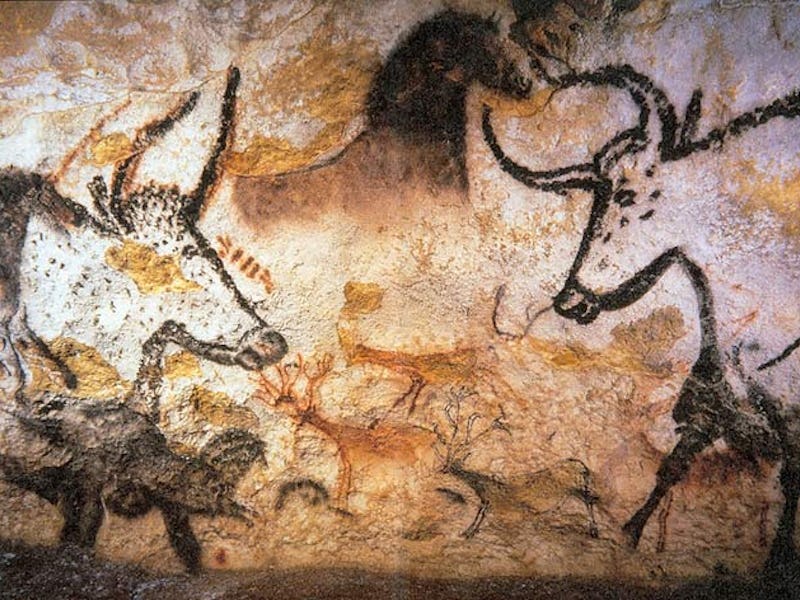The "Sounds" of Cave Paintings Were the Origin of Human Language
This is the 24th most surprising thing we learned about humans this year.

In 2018, scientists came one step closer to understanding how humans developed their own language. In February, Inverse reported on a Frontiers in Psychology study positing that the revelatory capability emerged because the creation of cave art ignited what scientists call “symbolic thinking.” The pairing of painting and sound by ancient humans, they argue, was no coincidence — it was the stepping stone towards our modern ability to express ourselves with words.
Symbolic thinking is the capacity to represent thoughts, beings, and events that aren’t actually present. The authors from MIT and the Universities of Tokyo and São Paulo argue that examples of cave art symbolic thinking are moments of expression like the orange and white hands of Cueva de las Manos in Argentina and the herd of bison painting in France’s Lascaux cave. It’s theorized that these images are not just representations of concepts and events — they were purposefully placed in locations with certain acoustic properties.
Hoofed animals like the Lascaux bison are, on average across cave art, painted in chambers where the echoes and reverberations of the cave sound like hoof beats. Researchers have also come across painted stalagmites and stalactites that, when hit, sound like chiming instruments. Handprints, dots, and felines, meanwhile, are typically painted in quiet chambers.
The sound of hoof beats paired with a painting of a hoofed animal, the hypothesis goes, enhanced ancient humans’ ability to convey symbolic thinking, which linguists agree is a crucial element of language. Art and language can be proxies for expressing an internal mental state — by creating cave art, the researchers write, these early artists were inventing “fossilized proxies for the expression of full-fledged human linguistic behavior.”
This process, in which an acoustic signal is converted into a mental representation and then spit out into the world as a visual, researchers argue, is how humans came to have the high-level cognitive processing necessary for communicating with a language. Homo sapiens emerged as a species about 200,000 years ago and began speaking to each other with words about 100,000 years later — and in the build-up, created fantastical, multi-dimensional art.
As 2018 winds down, Inverse is highlighting 25 surprising things we learned about humans this year. These stories told us weird stuff about our bodies and brains, uncovered insights into our social lives, and illuminated why we’re such complicated, wonderful, and weird animals. This story was #24. Read the original story here.